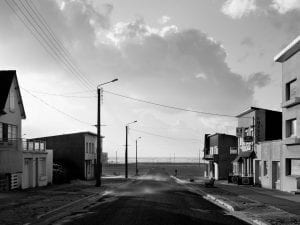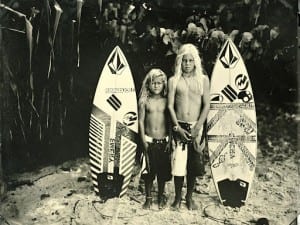Overshadowed by the 400th anniversary of the death of El Greco, 2014 was also the year of José Guerrero. Born in 1914, he was one of the most important Spanish artists of the second half of the 20th century. He began his artistic education in his native Granada and Madrid, but his career received a decisive impulse with his stays in Paris and other European cities, where he discovered avant-garde art. During a stay in Rome he met his future wife, Roxane Whittier Pollock, an American journalist, and moved to New York in 1950. Dazzled by Abstract Expressionism, he quickly entered avant-garde circles where and met his dealer Betty Parsons, who at that time was promoting figures like Jackson Pollock, Mark Rothko and Clyfford Still. From that moment on, Guerrero embraced abstraction. It is at that crucial point where the exhibition José Guerrero: The Presence of Black, 1950-1966 positions itself. After its opening in Granada last October, it has also been in Madrid and will shortly travel to Barcelona.
Few people have played such an important role in the promotion of Guerrero’s legacy as Yolanda Romero. Curator of many exhibitions and co-author of his catalogue raisonné, she is the director of the Centro José Guerrero since its opening in Granada in the year 2000. Alongside Francisco Baena, she has prepared this exhibition over the course of the last two years.
A: What is the visitor going to find in this exhibition?
YR: We thought of the exhibition with the idea of analysing one of the perhaps lesser-known periods in Guerrero’s oeuvre: his American years. Chronologically, the exhibition begins in 1950 and ends in 1966, but we’ve added a small prologue because we wanted people to see where Guerrero’s work was coming from, many of his themes, ways of approaching his work that were already in his paintings of the late 1940s. The show has a didactic character which is important for us. One can follow the work from its beginnings, with that prologue, through to 1966, which is another important moment in his work, coinciding with his return to Spain.
A: The Presence of Black was the title chosen by Guerrero for an exhibition at Betty Parsons Gallery that took place in 1958. Why did you choose this title for the current exhibition?
YR: Black was an important colour for many American abstract painters and Guerrero used to say it was a colour he wanted to claim as his own. It’s also true that in 1958 he suffered a personal crisis. It was a very intense year, both in his professional and personal life, which finally led him to psychoanalysis. Apart from this, black was a colour that had always accompanied him. He remembered how he had had to wear black during most of his youth due to the mourning of several deceased members of his family. In fact, here (in Granada) he was called “the black friend” because he was always wearing black from head to toe. But Guerrero also spoke of a black that was alive, a colour that is present in landscape, that is present in our lives.
A: An unknown part of Guerrero’s work is on show in this exhibition, such as the portable murals, which have never been seen in Spain.
YR: Our objective with the exhibition was to show a much more complex and experimental artist than the one that was known until now. Both his graphic work, which hasn’t been seen in Spain either, and the murals play an important role in this respect. His interest was to incorporate the architecture of that period to the field of painting, to use the materials with which the construction industry was experimenting at the time. He worked on these experimental pieces for almost a decade. He used fibre cement, tiles and refractory brick as a background for his paintings and also ethyl silicate, a chemical component that gave the paint bright colours and great durability.
A: After a solid 15 year career in the USA, Guerrero established himself in Spain between 1965 and 1968. What is your view on his identity? It is always a disputed affair – do you see him as Spanish or American?
YR: Guerrero was lucky to find himself in a situation where Spanish abstract painting was at its peak. There were, no doubt, many similarities between this art and Abstract Expressionism, although they have their differences. Guerrero experienced that contradiction. In the USA he was frequently considered a painter of Spanish characteristics, but not Spanish. In fact, his work was shown at several exhibitions dedicated to American artists, the first of which, in 1954, was titled Younger American Painters. He also exhibited at the Whitney Museum’s annual American painting show five times. In Spain, he fitted into the abstract scene of the time, and was fully accepted, especially by the Cuenca school. I think his work found a good reception because it also added something different to what was being made here, this is, his use of colour, which was not as frequent in the painting of the El Paso group and Spanish abstract art in general.
A: Tony Guerrero, the painter’s son, recently declared that his father was appreciated in Spain but not in the USA. Do you agree?
YR: I think Tony was referring to the current situation. Guerrero was highly appreciated during the 1950s, which is demonstrated by the incorporation of his work to many American collections, the purchase by private collectors and his presence at one of the most important galleries of the time, but it is true that later, with the arrival of Pop, the Abstract Expressionists lost part of their relevance. Obviously, Guerrero’s presence today is not the one he had in the 1950s, where he was fully a part of the American artistic community. Nevertheless, in recent years his work has been shown in New York, Amsterdam, Tokyo, Florence, it has been present in auctions and there is a higher appreciation. But, obviously, Guerrero is an artist that is currently much better known and valued in Spain. From the end of the 1970s onwards, Guerrero was considered one of the great Spanish artists of the second half of the century. His undeniable relevance deserved a greater presence in Spanish museums, apart from the paintings that can be seen at the Reina Sofía Museum in Madrid or the Centro Andaluz de Arte Contemporáneo in Seville. At the end of the 1980s, conversations began for the creation of what was to become the Centro José Guerrero (José Guerrero Centre), inaugurated in Granada in the year 2000.
A: How did the idea come about? Was it a project Guerrero had in mind?
YR: The Centro Guerrero was, in truth, a proposition made to Guerrero by the Diputación de Granada (Granada provincial authority) in 1989. The department of Culture established a collection of contemporary art and it was in this context that Guerrero –who had a very important personal collection– was offered to participate with his work. Guerrero liked the idea. He visited one of the spaces the Diputación offered him, but, on the one hand, he was already ill and, on the other, he said his artistic legacy was part of his son’s and daughter’s bequest and that it was up to them to decide what to do with his collection. It was after his death, in 1991, when his widow and his son and daughter accepted the Diputación’s proposal and the project began to take shape.
A: I understand that the family was very helpful. Is this true?
YR: The family understood that it was important to preserve the artist’s memory through an institution and I think they were very generous in accepting the necessary approach the museum had to have. They understood that it should not only be dedicated to the memory of Guerrero as if it were a mausoleum, but that the space had to be alive, connected to today’s art and open to other artistic expressions other than painting.
A: Between 2009 and 2011 there was a crisis in the Centro Guerrero which very nearly ended in its closure. Why did the problems arise?
YR: There was a contract signed with the Diputación which established that the family loaned, voluntarily and with no economic compensation, the use of that collection while the Diputación took care of the costs of exhibition and of the Centro itself. After the first 10 years there had to be a renegotiation of the contract: they had to decide if there would be a donation, if a Foundation was to be created, etc. The negotiations began but at one point the political representatives decided that there would be no José Guerrero Foundation but instead they would create a Foundation of Contemporary Art from Granada, in which Guerrero’s collection was to be included. They had not consulted the family. A disagreement arose, since the family wanted to continue on the same terms of the previous 10 years, yet with a more suitable administrative and legal formula, which was the creation of a specific José Guerrero Foundation. I think the crisis was not well managed and, on seeing that no solutions were being given, the family decided that if the Diputación didn’t agree on finding an alternative solution or creating a Foundation they would take the collection away. A civil platform was created in support of the Centro, which facilitated the stay of the collection in Granada. Guerrero’s heirs understood that the people, including young artists and cultural institutions from inside and outside Granada, were supporting and defending the Centro and this convinced them to continue the fight. The Plataforma por el Centro Guerrero (Platform for the Guerrero Centre) organised many actions. They were very persistent until the battle was finally won. It was a very intense year and a half. I must add that, professionally, this episode and the great amount of support we received was one of the greatest personal satisfactions I have had and probably ever will have.
A: Did you meet Guerrero?
YR: My relationship with him was during the last years of his life. My first contact with him was curious because it was at an exhibition here in Granada in 1985, where I came up to him and asked for an autograph. A few years on, when I began to work in the department of Culture at the Diputación, we organised an exhibition in the Palace of the Counts of Gabia. Later, the negotiations for the Centro began while he was still alive. My knowledge of Guerrero has been, above all, based on his work, but also on many of his writings and the exhibitions we have organised. In his writings you see that, more than as an artist, he was always fighting to find himself as a man. I also think that he was a person that never forgot his humble origins and that was able to connect with a politician in the same way as with an art critic, a younger artist or the baker across the street.
A: What place do you think Guerrero occupies in the history of Spanish modern art?
YR: I think he occupies a very relevant place, not only for the role he played in the New York school but, more importantly, because in Spain he was a guide for many artists, who were influenced by his open personality and, of course, his use of colour in painting, which gave many young artists a new approach to their work. I think that, on an institutional level, he is also very well recognised, his work is present in the country’s most important museums and I think he has the consideration he deserves, although there is still room for a better reassessment of his historical figure. Guerrero was also misinterpreted, he was used in controversies in which he himself was not involved and he was also rejected by some critics. I think that, with time, the appreciation of his work and his role has become quite unanimous and he has been recognised as a key figure in the history of Spanish art.
José Guerrero: The Presence of Black, 1950-1966. Casa de las Alhajas. Plaza de San Martín, 1. Madrid, ran until 26 April. The exhibition will travel to Barcelona in May.
Find out more at www.centroguerrero.org.
Rubén Cervantes Garrido
Credits
1. José Guerrero, Untitled, c. 1951-1952. Mixed media, 26 x 47.5 cm. Guerrero Family Collection.





